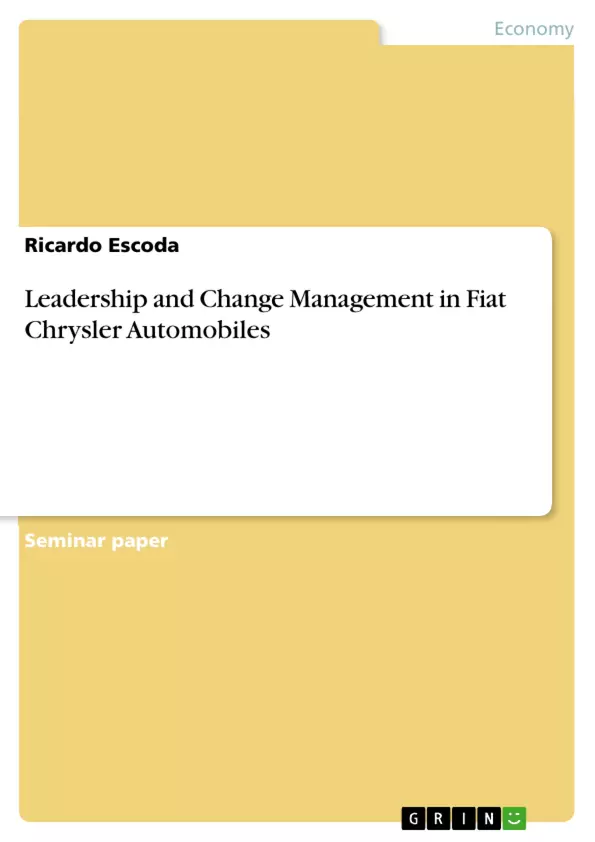Since market power has moved from enterprises to consumers, and global competition has increased substantially, managers in almost all industries need to face enormous performance challenges. To avoid red figures, they are forced to be more innovative in establishing and performing their competitive strategies. Long-term success will not be achieved solely through competitiveness but instead will depend on the ability to adapt to changes in a business’ environment and develop a consistent leadership style.
Inhaltsverzeichnis (Table of Contents)
- Introduction
- Underlining complexities and paramount challenges.
- Leadership style of Sergio Marchionne..
- Change Management at the Fiat Group
- Future recommendations for Fiat.
- Bibliography
- Statutory Declaration.
Zielsetzung und Themenschwerpunkte (Objectives and Key Themes)
This case study analyzes the leadership style of Sergio Marchionne, former CEO of Fiat Group, and its impact on the company's turnaround. The paper examines the challenges faced by Marchionne, his leadership approach, and how he implemented change management strategies. The objective is to gain insights into successful leadership in a complex organizational context and understand how leadership styles can influence organizational performance.
- Leadership style of Sergio Marchionne
- Challenges faced by Fiat Group
- Change management strategies implemented by Marchionne
- Impact of leadership on organizational performance
- Transformational leadership theories
Zusammenfassung der Kapitel (Chapter Summaries)
- Introduction: This chapter sets the context for the case study by highlighting the challenges faced by managers in today's competitive environment. It emphasizes the importance of adapting to changes and developing effective leadership styles for long-term success.
- Underlining complexities and paramount challenges: This chapter delves into the specific challenges faced by Fiat Group under Sergio Marchionne's leadership. It describes the company's declining market share, financial difficulties, and outdated organizational culture. It also mentions complexities like brand silos and a hierarchical management structure.
- Leadership style of Sergio Marchionne: This chapter explores Marchionne's leadership style, examining his approach to motivating and influencing employees. It analyzes his unorthodox methods, such as replacing top management and firing employees, as well as his focus on results and risk-taking. The chapter also discusses his efforts to create a more responsive and collaborative culture at Fiat.
Schlüsselwörter (Keywords)
The key keywords and focus topics of this paper include leadership, change management, organizational transformation, Fiat Group, Sergio Marchionne, leadership styles, transformational leadership, and organizational performance. The case study examines the application of leadership theories and concepts to a real-world business situation, providing insights into successful leadership practices in a challenging environment.
- Quote paper
- Ricardo Escoda (Author), 2018, Leadership and Change Management in Fiat Chrysler Automobiles, Munich, GRIN Verlag, https://www.grin.com/document/438278



